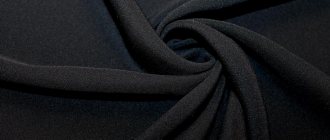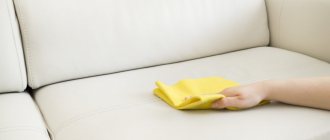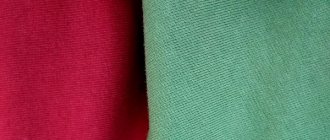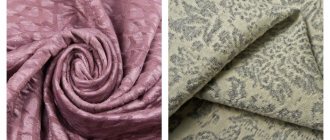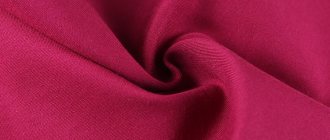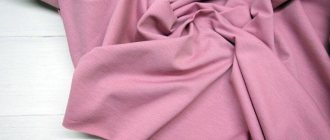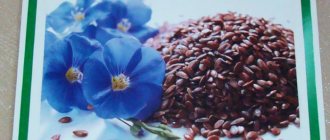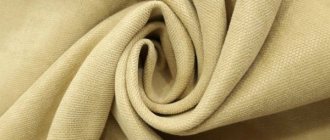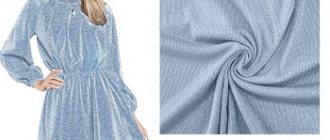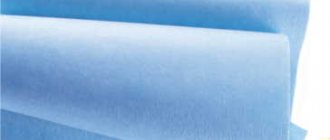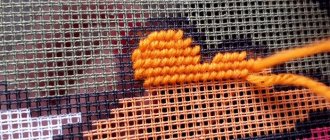It is often difficult to purchase an item of clothing and be sure that the next day you will not meet someone dressed similarly. Therefore, fabrics are always in demand.
An item made from high-quality fabric, taking into account the individual characteristics of the figure, will be truly beautiful.
A wide selection of fabrics in the online store “Modnitsa” will satisfy the most demanding customer.
Fabrics are different
Natural, synthetic and mixed fabrics are suitable for sewing clothes.
Synthetic fabrics are the cheapest. These include: polyamide, polyurethane, spandex, acrylic, lycra, etc. They are easy to wash, they dry quickly after washing, hardly wrinkle, and are inexpensive. Unfortunately, synthetics do not “breathe” well. Poor-quality synthetic fabrics develop pilling and wear out quickly.
There are fabrics that are a mixture of natural and synthetic fibers. They are called mixed. Thanks to this composition, the fabric has many advantages. They are breathable, durable, pleasant to the touch, and wrinkle resistant.
Natural fabrics are the most expensive. These include: linen, wool, cotton, silk. Their advantages: softness, warmth, hygroscopicity. But natural fabrics wrinkle easily. If the product was sewn without taking into account shrinkage, then after washing the clothing will become small in size.
How to choose fabric?
Modern fashion is changeable and demanding of its active followers. Today it is quite difficult to purchase a unique item that is not part of the “mass market” and wear it with full confidence that you will definitely not see a second one on someone else. That is why there is a profession of a tailor, who can create unique things that are ideal for your figure, taste and correspond to all the trends of the fashion market. Today, thanks to the active work of the domestic and foreign light industry, the choice of fabrics is so great that sometimes it is impossible to do without the help of a professional tailor or designer. Light, rustling, silky, soft, fluffy, rough and pleasant to the touch - all this variety of fabrics is easy to find in specialized stores. Modern designers now use the principles of eclecticism. Until recently, fabrics that were incompatible with each other today surprise with variations and design imagination. However, how can you not make a mistake and choose exactly the fabric that is ideal for the item you have in mind? What to choose for a business suit, and what for a light blouse? Which fabric will last longer, and which may disappoint after the first wash? Below we will try to tell you about the types of fabrics and how to choose fabric for sewing clothes. Fabric is a textile product obtained by weaving two systems of threads. The warp is the threads running along the fabric, and those located across are the weft. Today there are many types of weaving threads - from the simplest (canvas, twill, satin, satin) to very complex combined ones (drape, jacquard, corduroy, velor, fabrics with a checkered or striped pattern). All fabrics have certain quality characteristics and are assessed by their waterproofness, breathability, wrinkleability, and hygroscopicity. Natural fabrics Natural fabric has always been considered more noble and expensive than artificial fabric. Natural fabrics are soft, warm, and hygroscopic, but they wrinkle easily and can shrink after washing. For a long time, clothes made from natural cotton fabric could be distinguished by wrinkled folds at the bends. Natural fabrics are used for sewing underwear, sleeping sets, dresses, blouses, and shirts. Linen has a smooth, shiny surface, is pleasant to the touch and does not cause skin irritation, therefore it is often used for sewing light summer clothes that allow the skin to breathe. Linen fabric is light-resistant and does not fade when exposed to sunlight. Among the disadvantages of linen, we can only note that the fabric wrinkles easily and has almost no stretch. Wool is soft and elastic, allows air to pass through well, and does not wrinkle too much. Wool fabric is great for sewing warm dresses and outerwear. Silk is a fabric obtained from the cocoon of the silkworm. Silk fiber is quite thin and uniform in thickness, while it is quite durable and elastic. Silk is exposed to sunlight and may fade. Silk is ideal for sewing light blouses, dresses, and summer skirts.
Cotton is the most popular fabric in light industry. Cotton comes from a variety of plant species and is mostly composed of cellulose. Thanks to this, cotton fabric is highly durable and perfectly absorbs moisture. Ideal for underwear, T-shirts, shirts, summer clothes. Artificial fabrics Artificial fabric today is an alternative design solution for sewing fashionable clothes. There is an opinion that artificial fabrics are incomparable with natural ones - they have more disadvantages than advantages. But today, when the power of design ideas exceeds all expectations, synthetic fabrics are no worse than natural ones. They have a lot of advantages that are appreciated by lovers of practical things. Synthetic fabrics are airtight and waterproof, they practically do not wrinkle. Polyamide, spandex, polyurethane, elastane, lycra - are highly durable and elastic, but do not allow air to pass through, do not absorb moisture well and are electrified. If an item contains more than 10% of these artificial fibers, you will be quite uncomfortable in it. These fabrics are relatively inexpensive, they are easy to wash and dry quickly, and sometimes do not even require ironing. But despite these practical characteristics, synthetics sometimes wear out quickly and pill. Acrylic - looks like wool, as this fabric is quite soft and flexible. But after the first wash, an acrylic item loses its elasticity and can stretch and wrinkle. Viscose is a synthetic fiber obtained from wood cellulose by chemical means. The positive properties of viscose are that this fabric is highly breathable, pleasant to the touch, silky and retains its good appearance for a long time. Blended fabrics Blended fabric is a fabric obtained by mixing natural and synthetic fibers. Thanks to this, it is possible to obtain a fabric that has additional practical properties, is pleasant to the touch and has high quality characteristics. For example, by mixing cotton and polyester, you can get a durable, wrinkle-resistant fabric that will be pleasant to the touch and will not cause discomfort. Blended fabrics are used mainly for sewing uniforms and workwear, which are durable and comfortable at the same time. Orton, Greta, Tisi, Sisu, Teredo, Satori are beautiful, durable, durable, mixed fabrics that are most often used by designers and tailors. Ideal for sewing high-strength workwear. We have a little understanding of the types of fabrics and their quality characteristics. Now let's see which fabric is best to choose for sewing certain clothes. Fabric for a suit A suit is an integral part of any wardrobe, both men's and women's. There are a large number of fabrics for tailoring a suit - classic, mixed, original, any colors and textures. The suit can be either strict classic or elegant - feminine with an unusual cut. Suits are made from both natural and artificial fabrics. A traditional men's formal suit is made from wool or wool blend fabrics, while less formal ones are made from linen and synthetic fabrics. Women's suits require softer and finer fibers. A women's suit can be sewn by combining several types of fabric, and you can also use original blouse fabrics for its decorative elements. The most popular suiting fabrics: velvet, corduroy, velor, gabardine, boucle, jersey, tweed, plush, tartan . To sew a festive suit, thick blouse fabrics are used, such as satin, silk, viscose. To add originality to an elegant suit, you can add decorative elements made of leather, lace, guipure, and add shine with rhinestones. You need to clean your suit with a special clothes brush, carefully removing dust and lint from it. In addition, the suit should be dry cleaned periodically. We do not recommend washing your suit in a washing machine, even on a delicate cycle. Fabric for a blouse Often, clients of fashion ateliers approach the choice of fabric for blouses with special trepidation. How else? Blouse fabrics are light, flowing, airy fabrics, they are very pleasant to the touch, and their slight translucency adds femininity and intrigue to the image. Often the choice of fabric for a blouse depends on the style you choose. The fabric you like will not always be suitable for the chosen model. But in this matter, it is worth consulting with a designer - a specialist will advise you which fabric will look best on you, and which one is suitable for working with the intended sketch. The most popular blouse fabrics: satin, stretch satin, crash satin, guipure, guipure leather, corrugated, georgette, lace fabric, lycra, organza, silk (natural and artificial), taffeta . Please note that blouse fabrics require special careful care. It is better to wash them by hand or select a delicate cycle in the washing machine. Water temperature – no more than 30 degrees. As for ironing, you should be careful here - you need to iron such thin fabrics at the minimum setting and preferably through a damp piece of cotton fabric. Fabric for a dress To sew a dress, you are offered the widest range of fabrics - various textures, weaves, prints and trims. You need to choose fabric for a dress depending on its style and purpose. A classic business dress requires thicker fabric and subdued colors. But a light summer dress gives free rein to your imagination! The most popular fabrics for dresses: cotton, linen, wool, silk, satin, viscose, lavsan, knitwear, satin, chiffon, lace fabric. When sewing a dress, it is considered absolutely normal, and sometimes necessary, to combine different textures. Combining fabrics makes it possible to create an original, unusual piece of clothing that will be appropriate, for example, at a business meeting or at friendly gatherings in a cafe. For warm dresses, choose dense natural fabrics that are soft to the touch and pleasant to the body - wool, cotton, thick knitwear, viscose, and for light and flowing ones - silk, linen, satin, chiffon. Fabric for coats To sew a warm coat, it is better to choose soft, moisture-resistant fabrics, preferably with the addition of llama wool, alpaca or mohair. Adding wool will make the coat warmer and more pleasant to wear, without making it heavier. Coat fabric can be smooth or boucle, with short or long pile. As for colors, today modern European manufacturers offer fabrics with various prints and decor, so your imagination will have plenty of room to run wild. When sewing a coat, do not forget about the lining fabric. The most practical and pleasant to the touch is viscose lining. An original solution would be to select a lining fabric to match the fabric for the top of the coat. By using your imagination, you can choose an original duet that will surprise others every time you take off your coat. When it comes to caring for your coat, the fabric requires careful care. The coat should be periodically cleaned with a dry clothes brush, small threads and lint should be collected, and the coat should be dry-cleaned at least once a season. With such proper care, coat fabric will retain its appearance longer. We tried to give you an excursion into the world of fabrics, talking about their main types and purposes. If you are planning to order a dress, suit or any other clothing for yourself, use our practical advice, but also take into account the opinion of professional designers and tailors who know each type of fabric by touch. And if you still don’t dare to order custom tailoring for yourself, go to a fabric store. We are sure that, having seen all the variety of textures, palettes and prints, you will undoubtedly hurry to the nearest atelier!
We wish you a good choice!
Author: Alena Tolstova
Suit fabrics
Classic suits are made of wool or wool mixture.
Women's suits are made from: linen, denim, velvet, gabardine, tweed, corduroy, silk, etc. An interesting effect is achieved by combining different fabrics.
Fabric for sewing a blouse
The blouse fabric should be light and comfortable to the body. Translucent material gives additional weightlessness and femininity to its owner.
The following are suitable for sewing this delicate wardrobe item: georgette, organza, silk, taffeta, satin, stretch satin, lace fabric, guipure, etc.
Fabrics wholesale and retail in Moscow mean quality, individuality and modern style.
